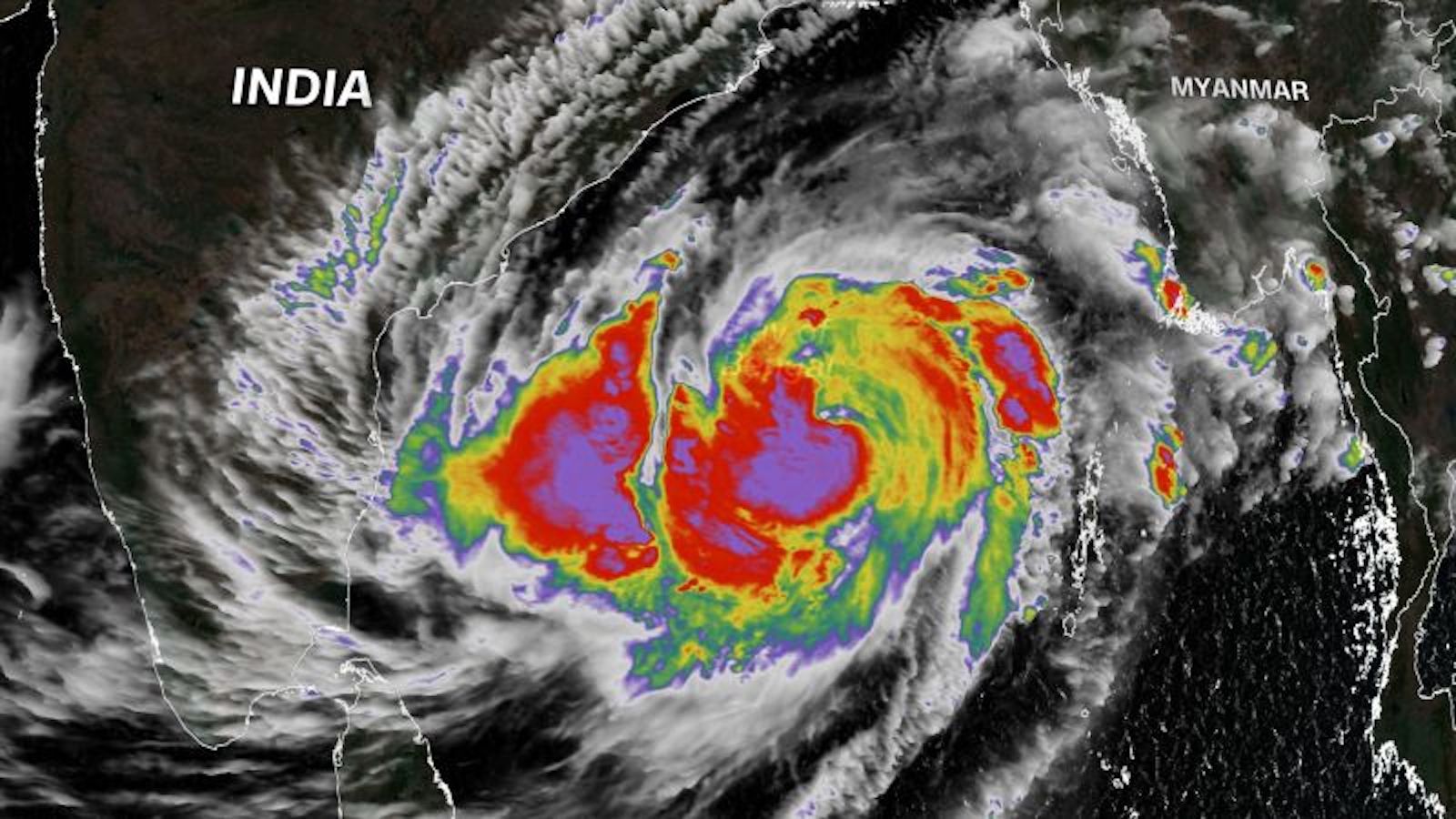(CNN) – A tropical cyclone has intensified in the Bay of Bengal and is on its way to batter western Myanmar and Cox’s Bazar in Bangladesh, where about a million people are living in temporary shelters in what It is considered by many to be the largest refugee camp in the world.
Cyclone Mocha is the first cyclone to form in the Gulf this year and is expected to strengthen before making landfall on Sunday, most likely in Myanmar’s western Rakhine state near the border with Bangladesh.
According to the Joint Typhoon Warning Center, Al Mokha strengthened on Friday and its strength is already equivalent to the strength of a Category 1 Atlantic hurricane and is moving north at a speed of 11 kilometers per hour.
The agency said the storm’s winds could reach a maximum of 220 km/h, equivalent to a Category 4 hurricane in the Atlantic Ocean, before landfall Sunday morning.
Cyclone Mocha over the Bay of Bengal. (credit: CNNweather)
India’s meteorological department said on Friday that Mocha had intensified into a very severe cyclonic storm and warned fishermen and fishing vessels not to sail into the gulf for days to come.
The agency predicted that a storm surge of up to 2.5 meters was likely to inundate low-lying coastal areas in the cyclone’s path at the time of landfall.
In Bangladesh, this includes Cox’s Bazar, home to members of the stateless Rohingya community who fled persecution in neighboring Myanmar during a military crackdown in 2017. Many live in bamboo and canvas shelters perched on mountain slopes exposed to strong winds, rain and wind. Landslides.
Also of concern are the hundreds of Rohingya refugees residing on a secluded, flood-prone island in the Bay of Bengal called Bhasan Char.
Ahead of the expected arrival of Typhoon Mocha, relief agencies are increasing their emergency preparedness and response with communities and refugees.
The United Nations High Commissioner for Refugees (UNHCR) in Bangladesh said in a tweet that “emergency preparations are underway in the camps and in Bhasan Char” in coordination with the government and local aid agencies.
“In preparation for the cyclones, hundreds of Rohingya refugee volunteers have been trained to identify risks, inform their communities, evacuate people when necessary and respond after a disaster,” UNHCR said in a tweet.
In neighboring Myanmar, residents of coastal areas in Rakhine State and Ayeyarwady district have begun evacuating their homes and seeking shelter ahead of the expected arrival of the cyclone, according to independent local news outlet Myanmar Now.
Myanmar’s ruling military junta issued typhoon warnings and claimed it was taking precautionary measures, such as preparing disaster management committees to respond to the potential devastation, according to the state-run Global New Light of Myanmar.
The United Nations Office for Humanitarian Affairs (UNOCHA) said in a situation report that there were “serious concerns” about the impact of the storm on vulnerable and displaced communities.
Of particular concern is the situation facing the 232,100 displaced people in Rakhine. The UN Office for the Coordination of Humanitarian Affairs said, “Many of the camps and sites for the displaced in Rakhine are located in low-lying coastal areas that are prone to storm surges.”
The Joint Cyclone Warning Center said that floods, mudslides and strong winds are expected throughout the area where the cyclone will make landfall as well as across the interior of Myanmar.
The last named tropical cyclone to make landfall in Myanmar was Marutha in April 2017. Although Marutha was equivalent to a tropical storm on land, with maximum sustained winds of 92 km/h, it brought heavy rain and damaged nearly 100 homes.
In October 2010, Tropical Cyclone Jerry was the last storm to make landfall with hurricane-force winds. It made landfall as a Category 4-equivalent storm with maximum sustained winds of 250 km/h.
Jerry killed more than 150 people and destroyed nearly 70% of Kyaukpyu town in Rakhine State. According to the United Nations, nearly 15,000 homes were destroyed in the state during the storm.
Aid agencies said the worst natural disaster to hit Myanmar was Cyclone Nargis in May 2008, which killed 140,000 people, severely affected 2.4 million and displaced 800,000.

“Music buff. Social media lover. Web specialist. Analyst. Organizer. Travel trailblazer.”

:quality(85)/cloudfront-us-east-1.images.arcpublishing.com/infobae/TEQF6EONZRFGLLLDIDD4L2O4EE.jpg)

:quality(75)/cloudfront-us-east-1.images.arcpublishing.com/elcomercio/XU32LRAEZFDDPNVHLFU3CKVBYY.jpg)



More Stories
Sheinbaum, Galvez, Mainz campaign wrap-up, news and more
Sheinbaum and Mainz’s CDMX campaign wraps up: Road Alternatives and Street Closures
Ortega attacks Humberto Ortega and declares him a “traitor to the country”